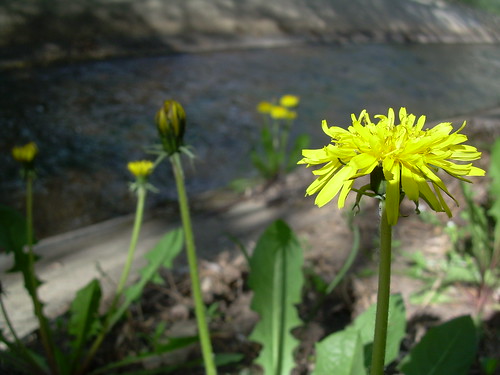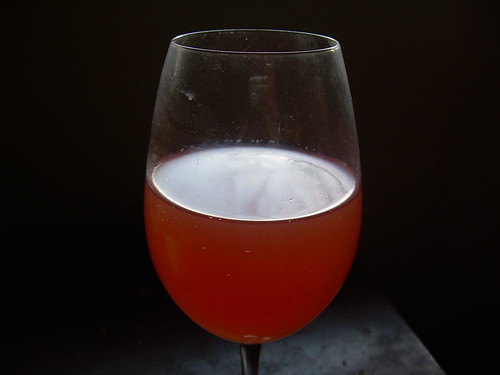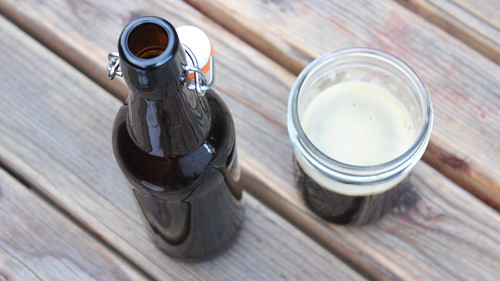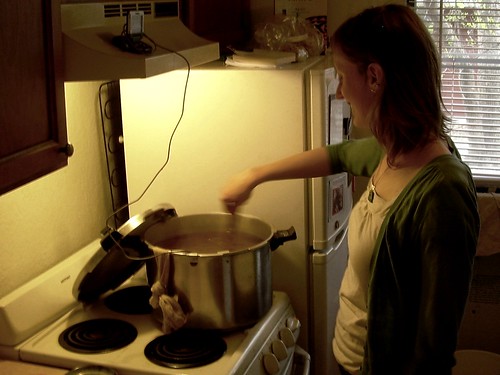
Once again, the
dandelions are saying hello. Modern U.S. society has a funny hatred for dandelions. The truth of the matter is that for a long long time people across the world have found dandelions valuable for their early spring nutrition and for their medicinal values. In fact, European immigrants purposefully brought dandelion seeds to North America. So quit spraying your lawns with herbicides and start being thankful!
This time last year, Eric and I started fermenting dandelion rhubarb
mead. It took about a month of going on walks and picking dandelions to gather enough flower petals. It's kind of a process, but its a good excuse to take a walk! It is good to pick right now because people haven't gotten fanatic about their lawns yet. Later in the season you have to pay more attention to who sprays herbicides and who doesn't.
We painstakingly removed all the green
sepals from the yellow petals. Some recipes say you should, some say it's not necessary. Next time, we'll try using the whole flower heads, because this was WAY too much work--although it was a nice meditative kind of work (see middle photo below).
Ingredients:
3 qt. rhubarb stalks, chopped and frozen
~1 qt. dandelion flower petals, frozen
2.5 lb. honey
Bring 2 qt water up to almost boiling (180F). Stir in honey and maintain temperature at 160-180F for a while to pasteurize. Higher temperatures are fine, but you will lose honey flavor. Pour the hot honey-water over the rhubarb and dandelion petals in a primary fermentation bucket. You can use an airlock fit in the bucket lid, or do what we did and just cover the bucket with a towel--there should be enough CO2 being belched out that baddies can't get in. After a few weeks, strain out the solids and rack into a secondary fermenter with airlock. Rack it again and bottle when it's done bubbling.



The finished product! It has a nice pink color. Our last rhubarb mead was yellow, strangely--maybe the rhubarb wasn't ripe? At first tasting, the mead was a bit harsh and I would say it needed some aging. But after sitting out for an hour or so, it got pretty good. Maybe this is similar to the effect of
decanting wine?












